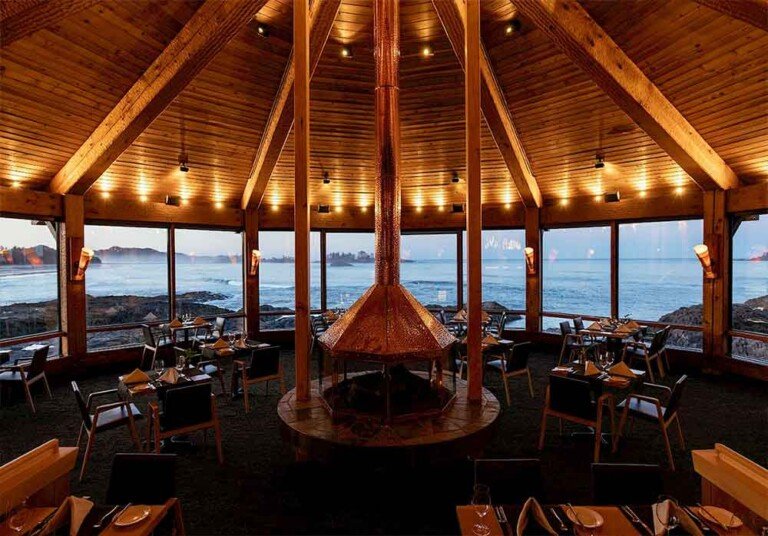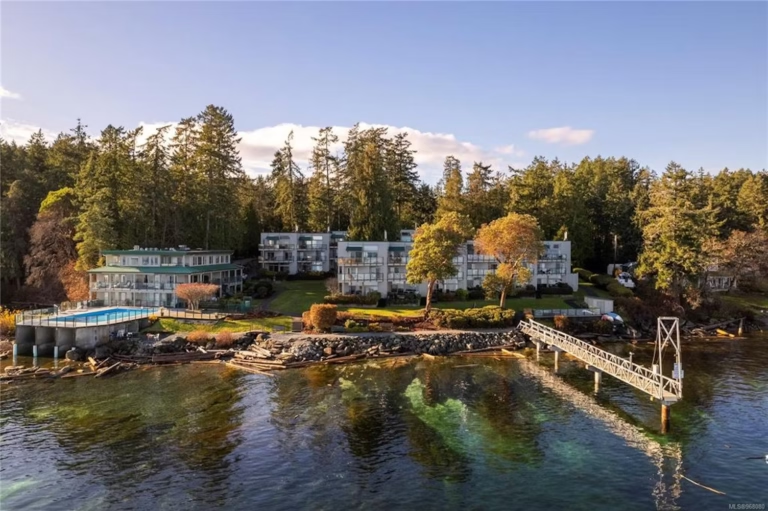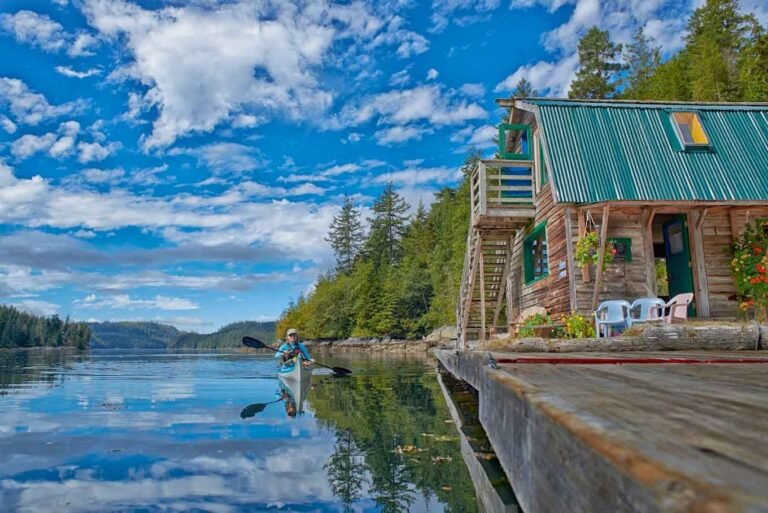Premier Listings for Naikoon Provincial Park
Haida Gwaii, the former Queen Charlotte Islands, comprises some of the most beautiful and diverse landscapes in the world. There are two large parks in Haida Gwaii: Naikoon Provincial Park in the north, and Gwaii Haanas National Park in the south, which is comprised of 138 separate islands, including the southern half of Moresby Island. Naikoon Provincial Park gets its name from a corruption of the Haida term for ‘long nose,’ which was the Haida name for Rose Spit, one of the most prominent features in the park.
Naikoon Provincial Park is largely low and flat, covering 72,640 hectares. Most of its topographic features are formed by underlying glacial deposits. In the northeast corner, Argonaut Hill, the highest point in the park, rises only 150 metres above sea level. Tow Hill, an outcrop of basalt columns, is a prominent landmark about 100 metres high on the north beach. A primary attraction for visitors to the park are the almost 100 kilometres of sandy beaches that seem to stretch endlessly to form the eastern and northern boundaries of this unique and intriguing park.
The headquarters for Naikoon Provincial Park are located at the southeast extremity of the park at the community of Tlell, on the highway just south of the bridge over the Tlell River. The village of Masset provides the gateway into the park, with road access along Tow Hill Road to the north coast of the park.
There are two ecological reserves in Naikoon Park: Tow Hill Ecological Reserve (5.14 square kilometres) and Rose Spit Ecological Reserve, a common resting spot for migrating birds at the northeast tip of Graham Island. Rose Spit is an excellent spot for observing migrating birds travelling south on the Pacific Flyway. Upwelling currents produce much food along the spit, attracting pelagic species rarely seen from the shore. Sandhill cranes gather here after nesting in the park bogs and shorebirds abound.
A prominent landmark on North Beach, at 109 metres (357 ft) in height, is Tow Hill, a huge outcrop of basalt columns formed when volcanic rock solidified into faceted basalt pillars about 2 million years ago. Tow Hill rises from the flat bogs of the Argonaut Plain at the mouth of the Hiellen River as the second highest point in the park, after Argonaut Hill (150 metres/492 ft). Enjoy the spectacular view along the curve of sun-drenched North Beach.
It is from Tow Hill that legend says the cruel Tow threw boulders to slay the Haida warrior Hopi. At North Beach on the northern border of the park, according to Haida legend, raven first brought people into the world by coaxing them out of a clam shell, making North Beach the site of creation.
The interior of the park remains undeveloped, with no road access. There are two campgrounds, available on a first-come, first-served basis (no reservations): Misty Meadows Campground (vehicle/tent sites and tent pads) near park headquarters in Tlell, facilities provided include pit toilets, water and a picnic-day use area with shelter. Agate Beach Campground (32 vehicle and 11 tent sites), these sites are equipped with cooking shelters, pit toilets and water. Wilderness camping is permitted throughout the park. Three rustic wilderness shelters are located along East Beach near the mouths of Cape Ball and Oceanda Rivers, and at Fife Point. The park is open all year and fees are collected from May to September. Campground hosts are often available at the Misty Meadows campground during the summer months to provide information and assistance to visitors.
There are four trails running through Naikoon Provincial Park, and hiking time ranges from a few hours to a few days. The longest trail is the East Beach Trail. It’s 55 miles (90 km) from the Tlell River Bridge to Rose Point, a three- to four-day hike along mostly level terrain. There are three shelters along the route. It’s recommended that you hike the trail south to north to avoid fighting prevailing winds. Strong hikers can do the East Beach Trail from the Tlell River Bridge to Cape Ball River and back (8.5 miles/14.5 km one way) in a day.
A second trail runs 3 miles (5 km) one way from the Tlell River Bridge and leads to the Pesuta, an old log barge that was wrecked here in 1928. Two trails start from Tow Hill on the north side of the park. The first leads to the summit of Tow Hill, an easy 0.6-mile (1-km) uphill climb. You can see Alaska from the top. A second trail leads 6 miles (10 km) to Cape Fife on the east coast. From here it is possible to hook up with the East Beach Trail, and hike a two-day, 13-mile (21-km) loop back to Tow Hill.
There are a number of Lakes in Naikoon Provincial park, the largest of which is Mayer Lake near the southern edge of the park, just north of the highway between Tlell and Port Clements. Other lakes include Hickey Lake, Spence Lake, Clearwater Lake, Lumme Lake, Harelda Lakes, and a number of others. The park’s lakes and streams are the source of drinking water. Help protect the delicate balance of the water system by washing yourself, your clothes, and dishes at least 30 metres from lakes or streams, and please don’t clean fish in them.
Fishing is the most common sport in Haida Gwaii, there being ready access to superb freshwater and saltwater fishing. Hiellen River, Sangan River and Chown River all offer good fishing in the park. If you don’t have a fishing rod, you can try your hand (and shovel) at digging for razor clams at low tide at North Beach in Naikoon Provincial Park. The clams are found between the high and low tide lines. Quarter-sized depressions in the sand show where clams most likely are. If the sand moves when tapped, there’s a clam below. The trick is to dig fast enough to catch up with the clam, which is burrowing for safety. It takes a few tries to get the hang of it, and you have to be quick; these puppies are fast. Before clamming, first determine the applicable catch limit and licence requirement with the Department of Fisheries and Oceans in Masset.
The climate here is mild, moderated by moist Pacific air throughout the year. Cool, rainy, or foggy weather and high winds can occur at any time, however, so campers and hikers should always be equipped with warm clothing and wet-weather gear.
In the early 1900s, the provincial government encouraged settlers to farm in the Queen Charlotte Islands, as they were called then. There were many who chose to homestead in the area that is now Naikoon Park, growing vegetables, raising cattle and taking gold from the sand beaches. However, difficult drainage, poor access, World War I and the lack of markets caused most people to abandon their efforts before the Great Depression. Many of the interesting place names in the area are reminders of their presence.
Getting There: On Graham Island, Highway 16 (paved) runs north from Queen Charlotte City, the navel of Haida Gwaii, for 113 kilometres to Masset on the north coast. Access to the park can be gained at Tlell, on the east coast, or by continuing on past Masset to the end of the road at Tow Hill, on the northeast coast of Graham Island. Park headquarters are on the highway just south of the Tlell River bridge. There is no developed access to the interior of the park.
From Vancouver: Year-round air service is available from Vancouver International Airport to Sandspit on Moresby Island. You can also fly from Prince Rupert with Harbour Air to Sandspit on Moresby Island.
From Prince Rupert: Take the six-hour ferry crossing from Prince Rupert to Skidegate Landing on Graham Island. Along the coast, much of the rhythm of travel is determined by the BC Ferries schedule. Reservations are strongly recommended.
To get to Prince Rupert, the following options are available: Drive the Yellowhead Highway 16 to Prince Rupert, travel by VIA Rail to Prince Rupert, or sail with BC Ferries from Port Hardy on Vancouver Island. From Alaska, catch an Alaska State Ferry to Prince Rupert.
Nearby Regions & Towns
Park Notices
Premier Listings

Biographical Info
Ocean Light Adventures introduces their new vessel for summer 2021. The powerboat Afterglow is a 60ft Monk designed Gulf Commander with 5 staterooms and 3 heads, offering amazing wildlife viewing from all windows and from the spacious top deck. Her crew has 34 years of experience offering natural history and photography tours on the BC Coast, including Haida Gwaii, and specializing in grizzly viewing tours in the Khutzeymateen Grizzly Bear Sanctuary, and spirit bear and grizzly tours in the Great Bear Rainforest. We also offer whale watching and eco tours, from totems to intertidal treasures, rocky shores to sandy beaches, and spawning salmon to towering trees. We offer five spectacular adventure trips between May and October, each to a different region and each highlighting the awe-inspiring beauty of the beautiful BC coast.





